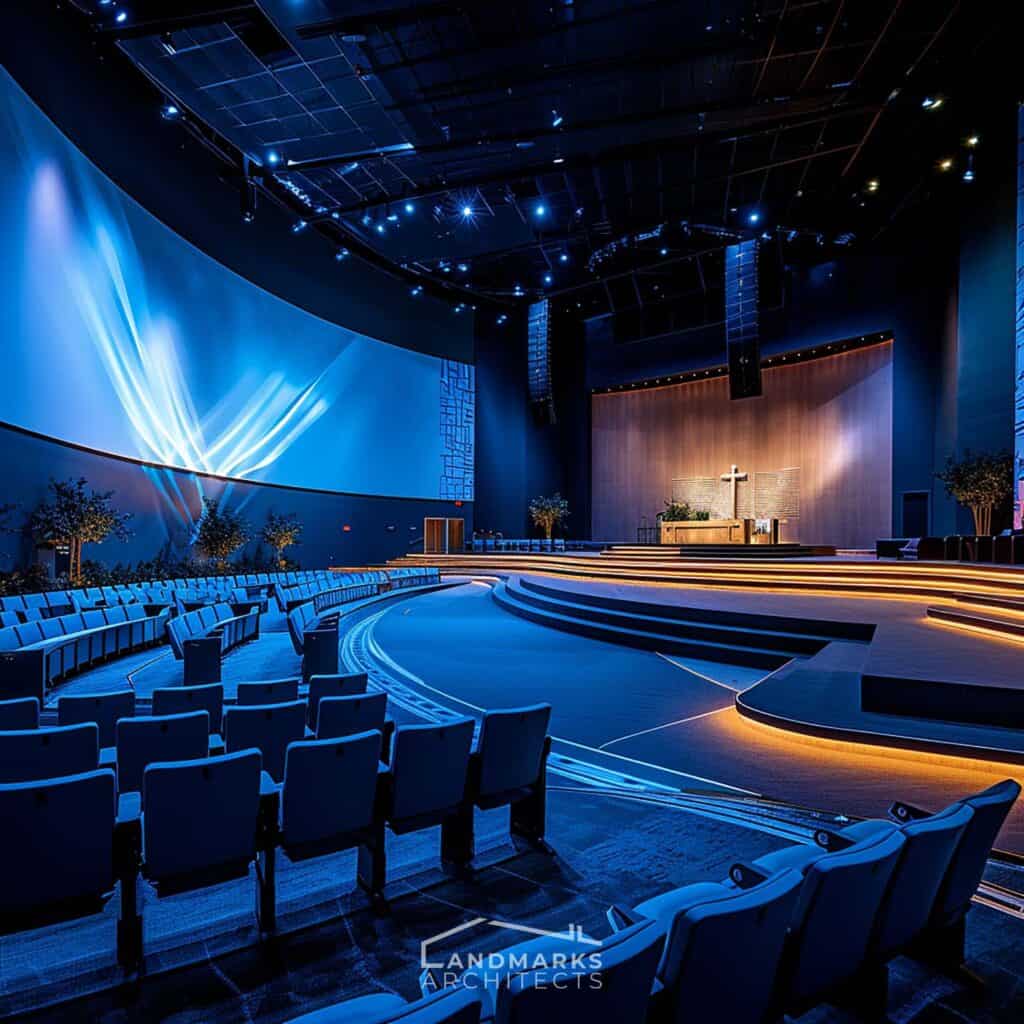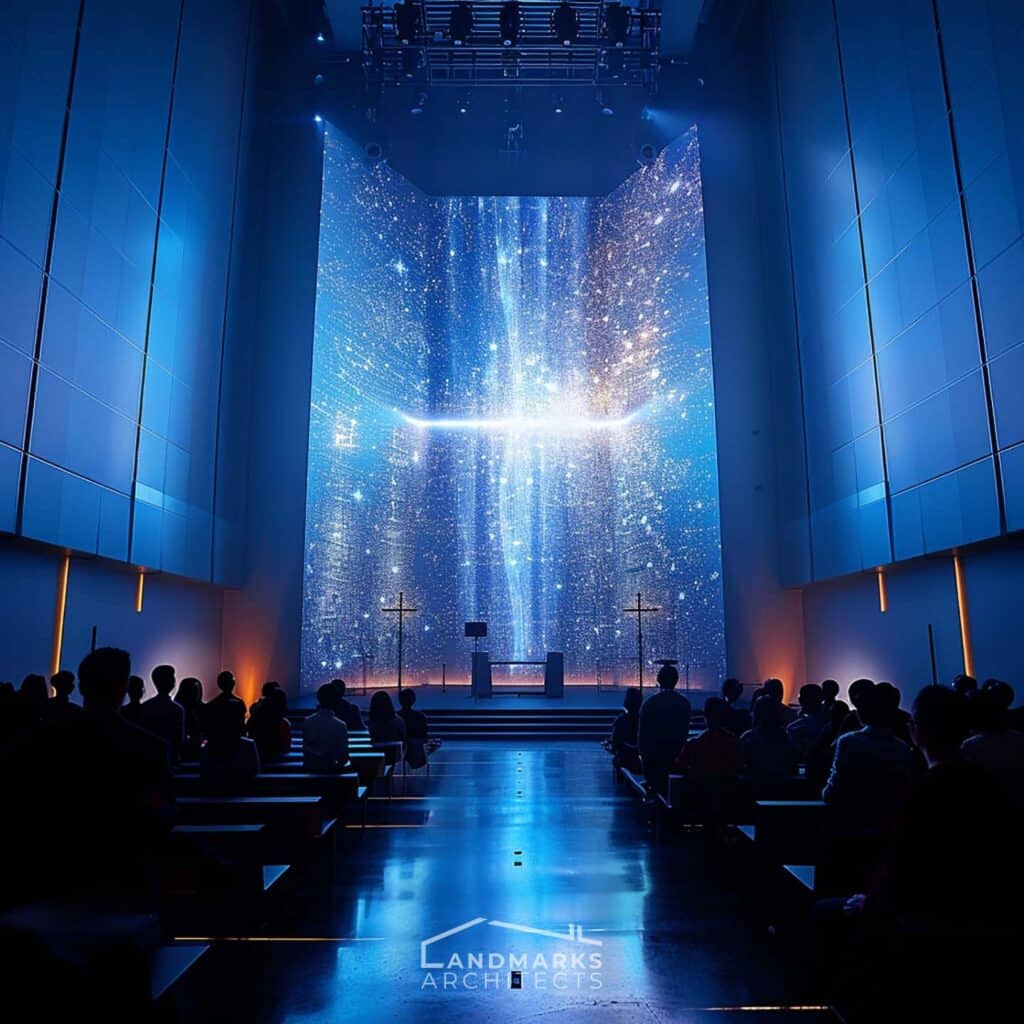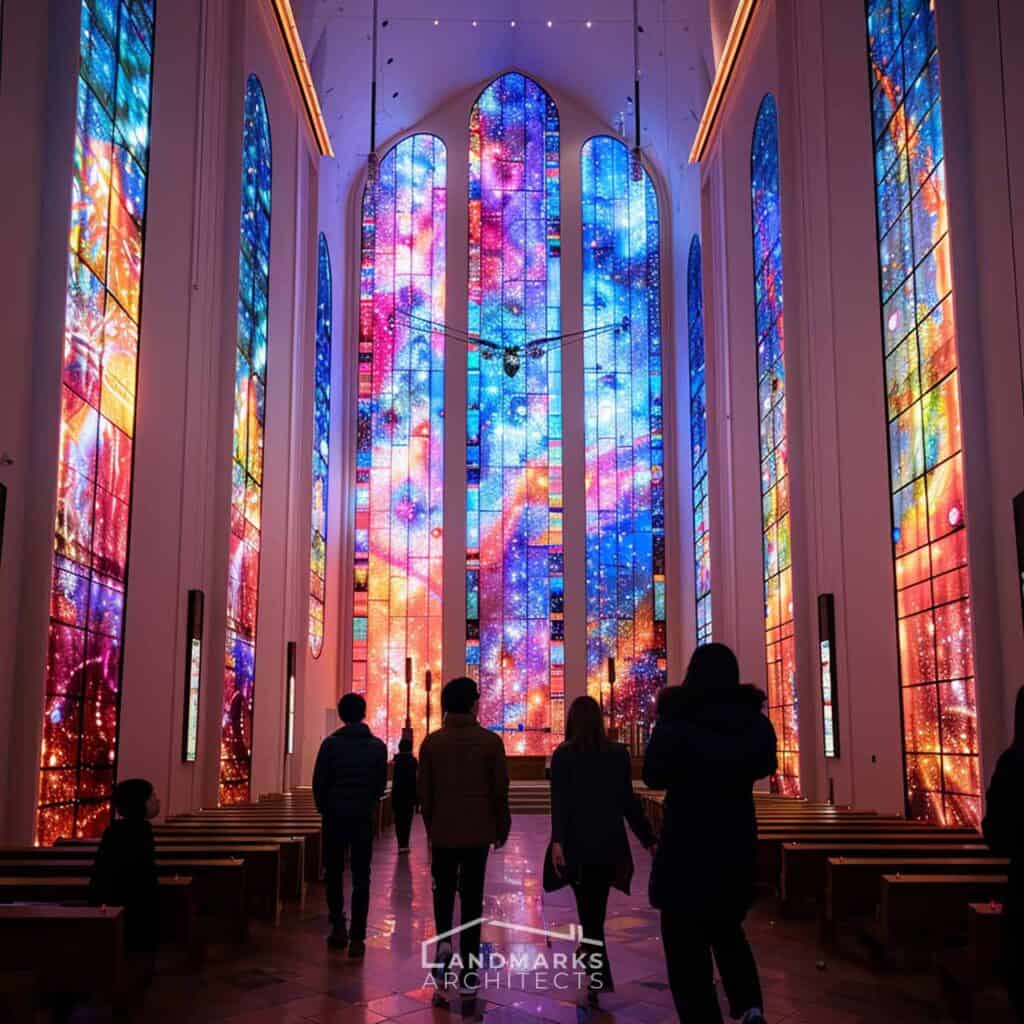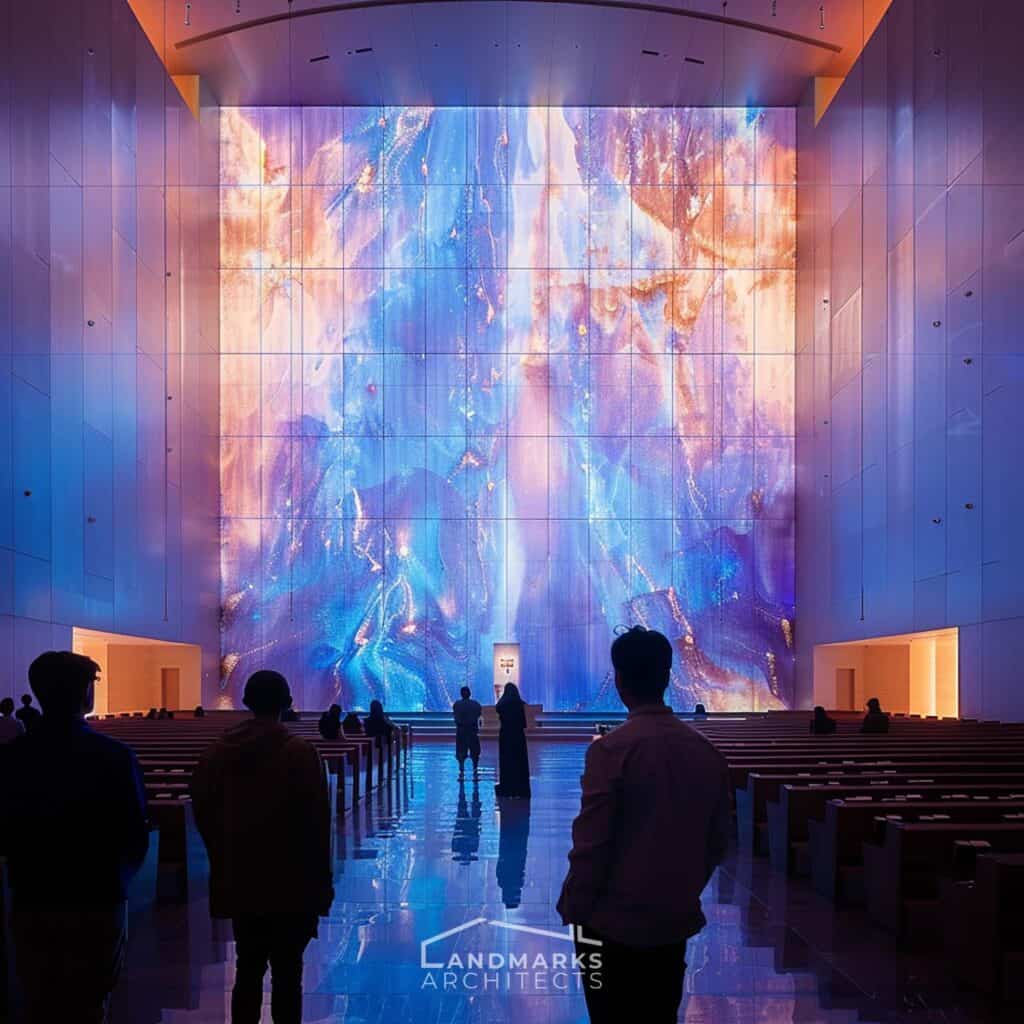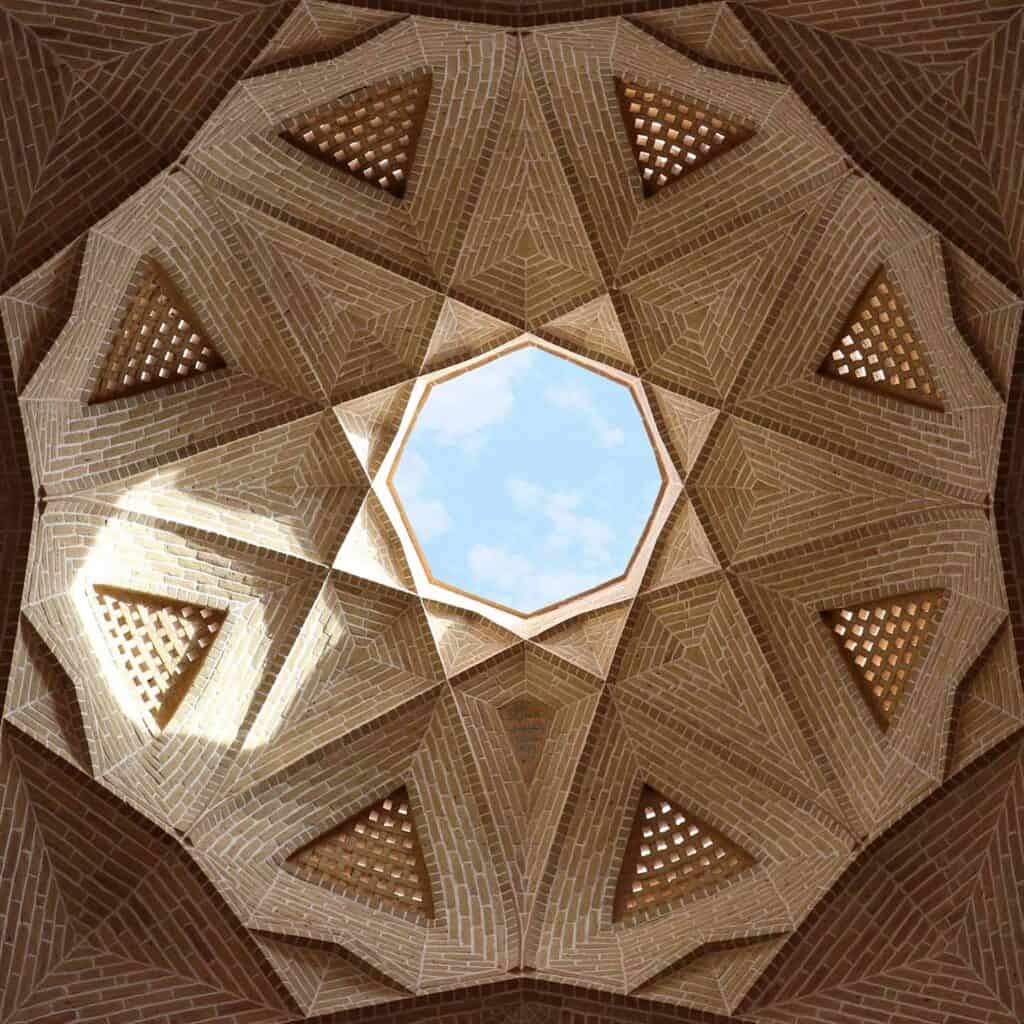
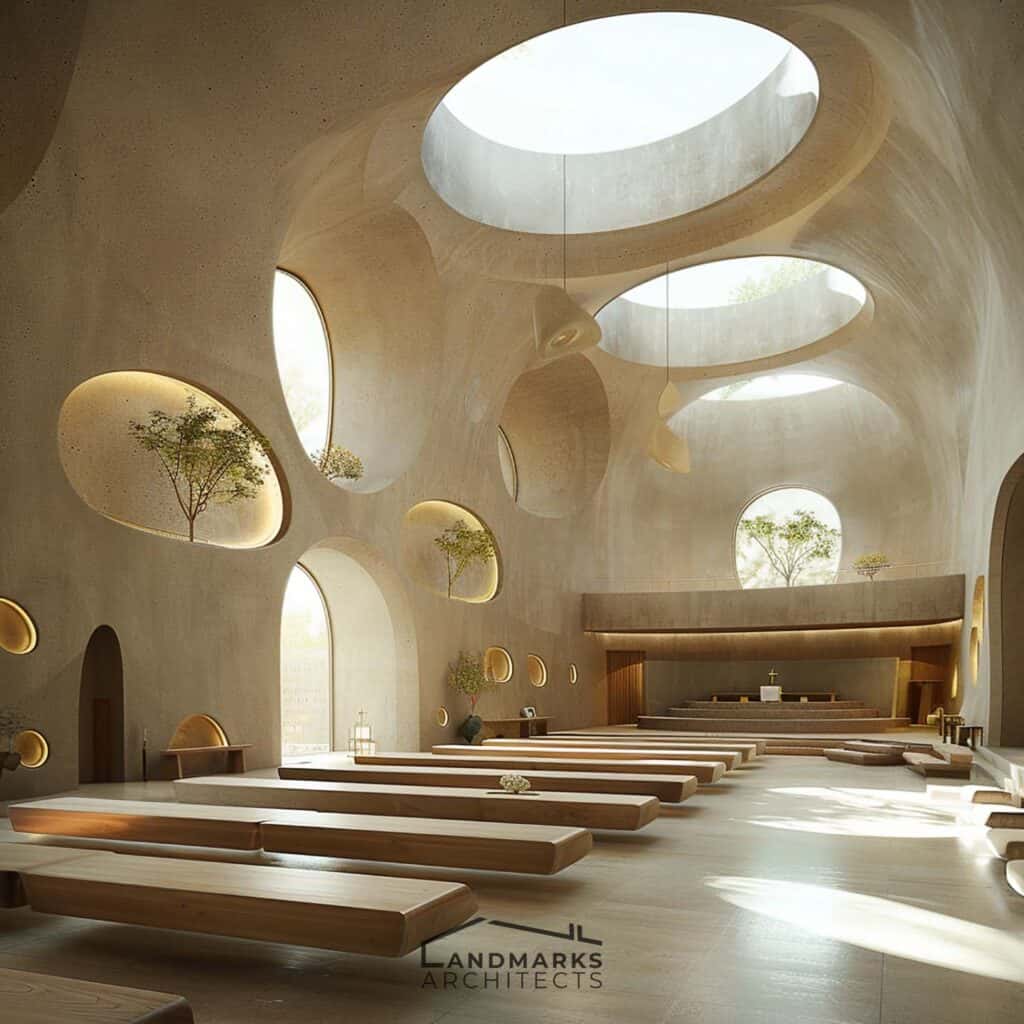
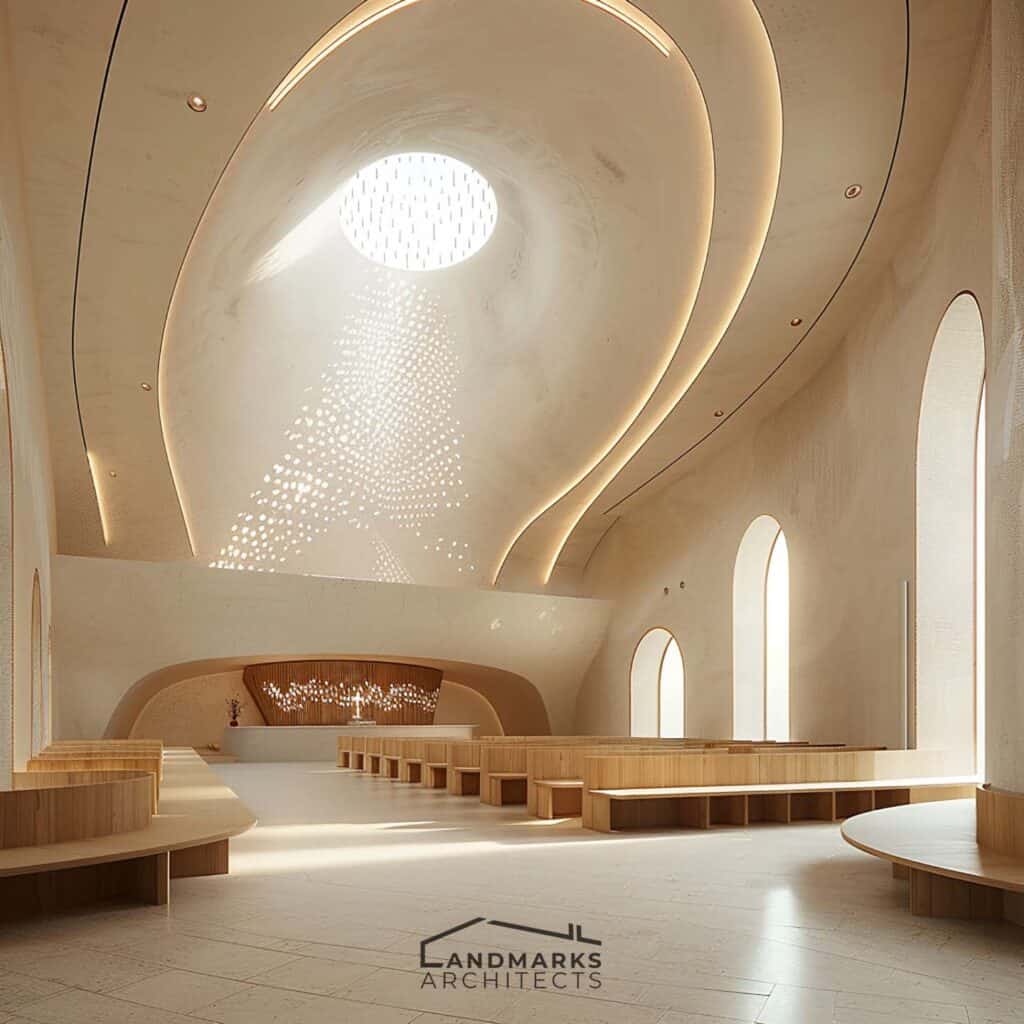
Welcome to the world where architectural ingenuity meets sacred purpose. In this article through the contemporary landscapes of church interiors, we invite you to commence an enlightening exploration of the transformative power of design beyond mere aesthetics.
Join us in an exploration of modern church interior design ideas, where thoughtful design extends its influence over functionality, technology integration, flexibility, inclusivity, sustainability, and the profound artistic symbolism that defines these spiritual sanctuaries.
1. Harmonizing Purpose and Adaptability
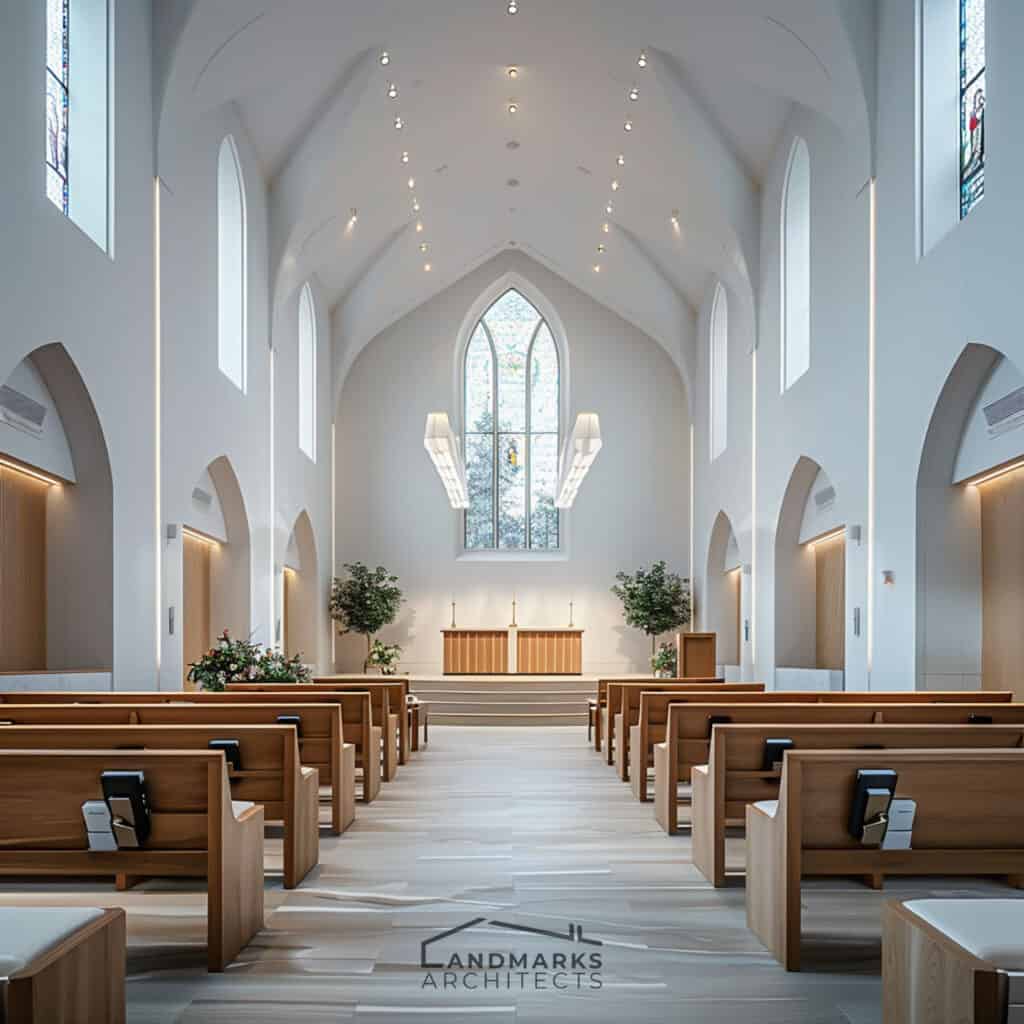
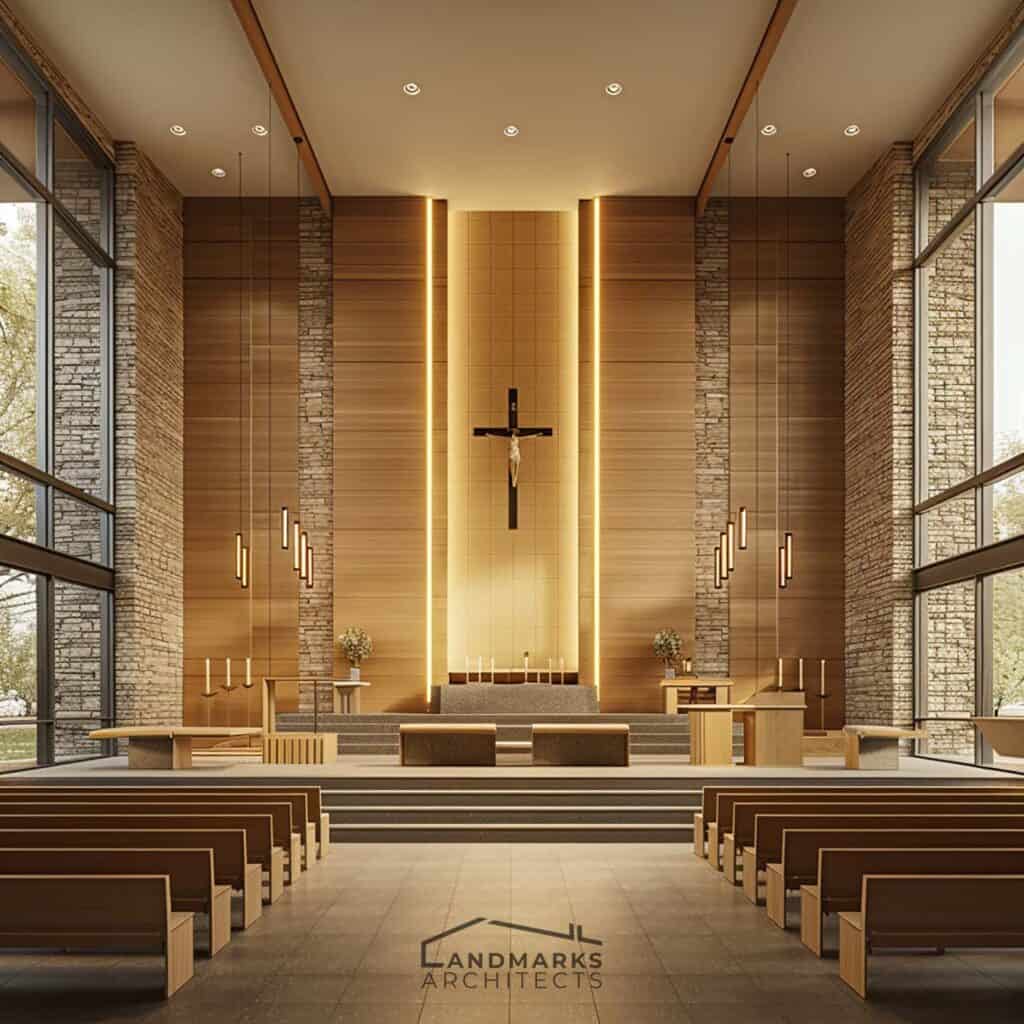
Within the evolution of church interiors, functionality emerges as a cornerstone. Modern church designs no longer adhere to static layouts but prioritize spaces that seamlessly adapt to various activities and gatherings. Interior designers, akin to architects of spiritual experiences, employ innovative approaches to optimize these spaces. The strategic placement of seating areas, incorporation of multipurpose zones, and utilization of modular furniture are key considerations in creating spaces that serve liturgical purposes while offering adaptability for community events and gatherings.
2. The Symphony of Worship and Innovation
Embracing the digital age, modern churches integrate technology to enhance the worship experience. Interior designers collaborate with audio-visual experts to weave cutting-edge systems, multimedia installations, and smart lighting solutions into the fabric of the sacred space. These technological elements not only facilitate seamless worship services but also create an immersive atmosphere, engaging congregants in a contemporary dialogue with spirituality.
3. Adapting to the Dynamics of Community Life


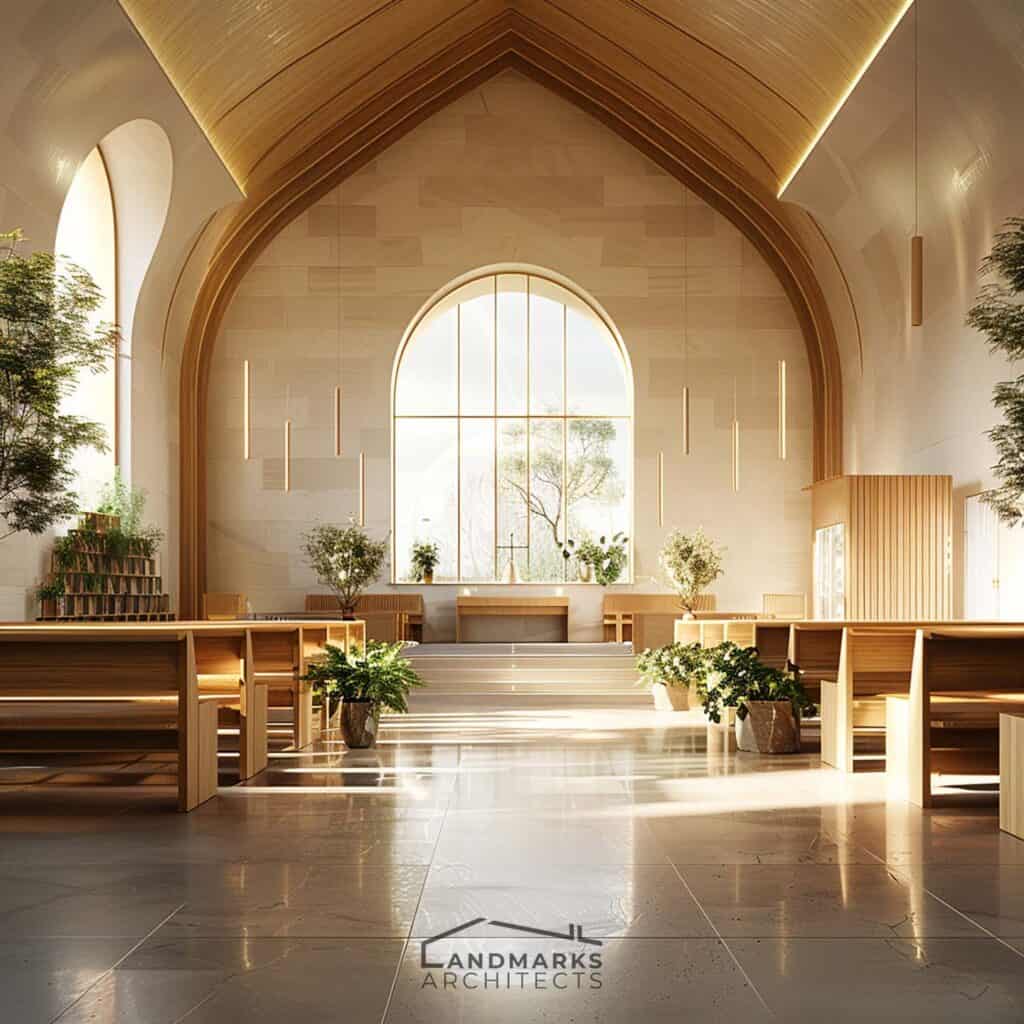
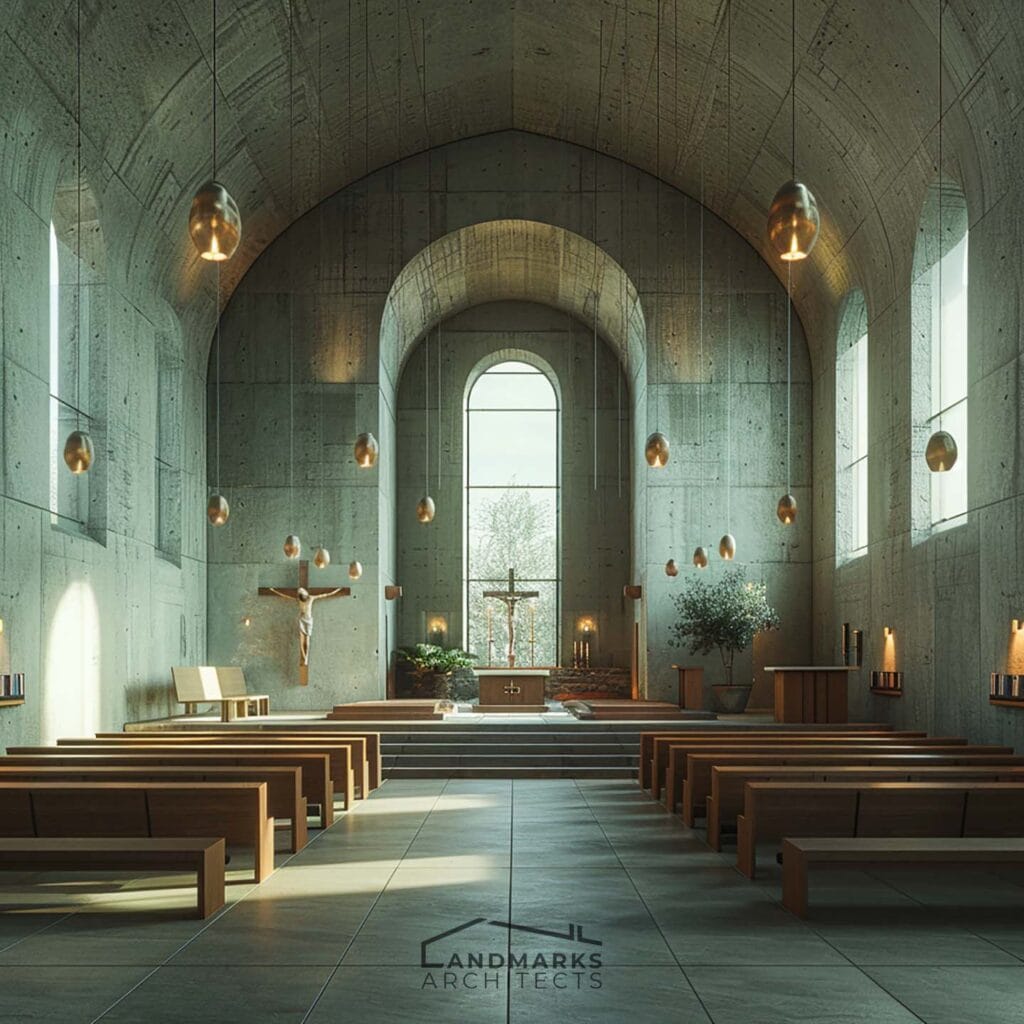
Designers envision dynamic spaces that can be quickly transformed based on the nature of the event or service. Flexible seating arrangements, movable partitions, and modular elements are thoughtfully incorporated to maximize space utilization. This approach not only fosters a sense of inclusivity by accommodating varying congregation sizes and activities but also encourages a spirit of community engagement and interaction.
4. Nurturing a Sense of Belonging
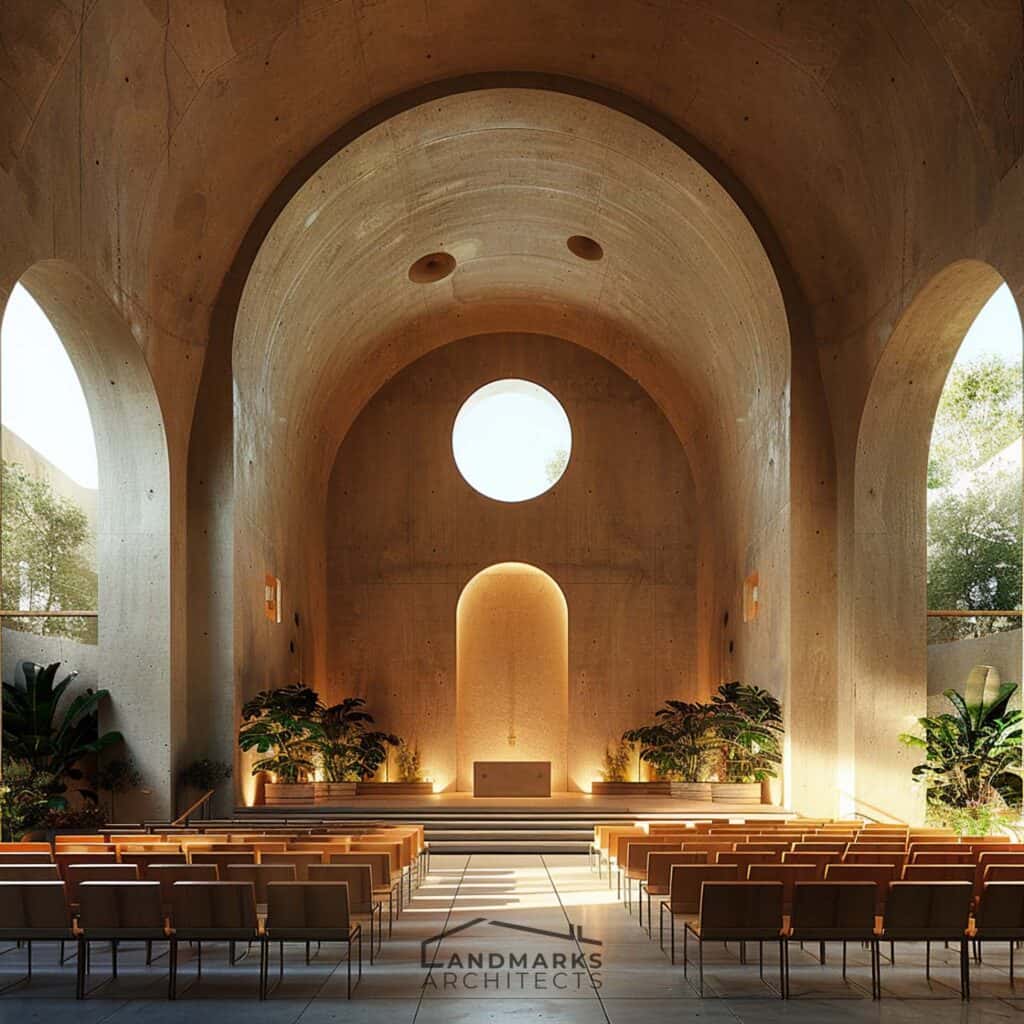
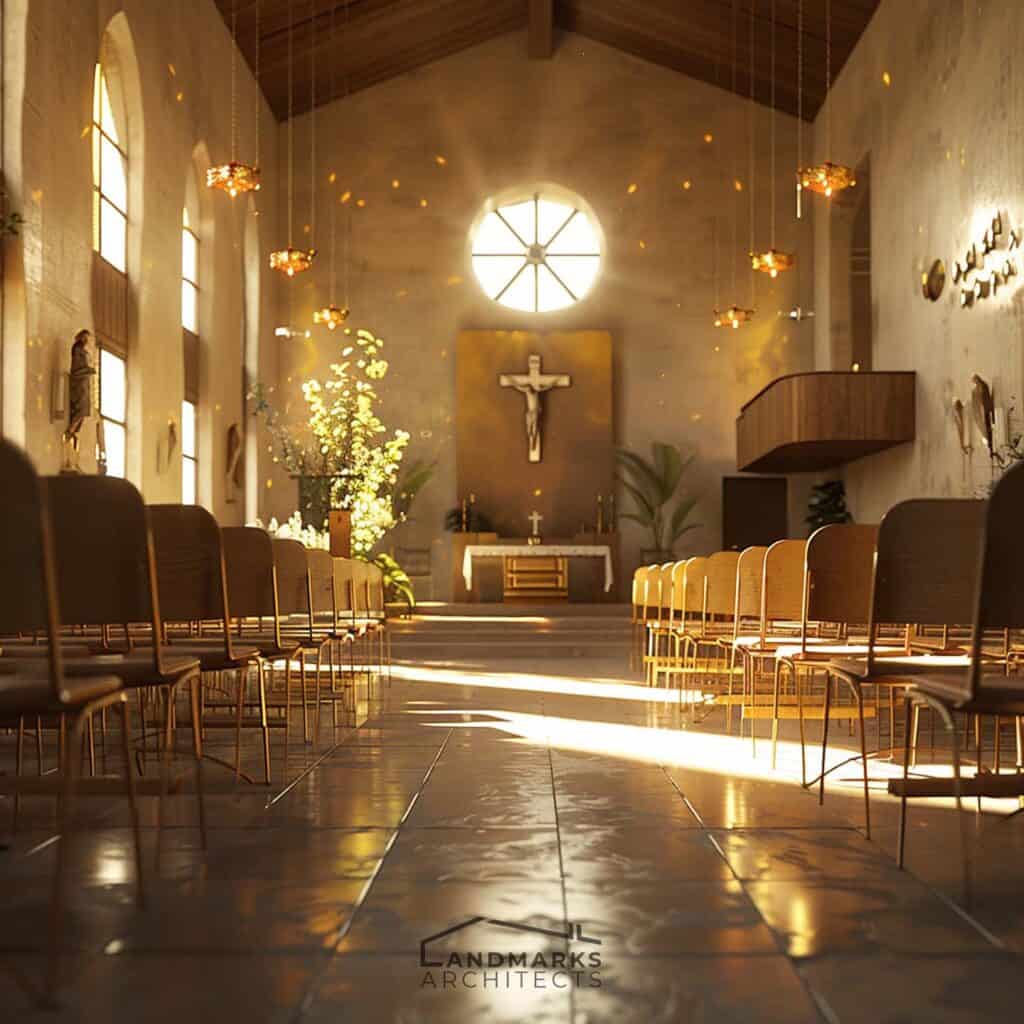
Central to successful modern church interior design lies the creation of a warm and inviting environment. Interior designers focus on cultivating spaces that radiate hospitality, utilizing elements such as strategically placed church chairs to encourage congregation interaction. Thoughtful design fosters a sense of community and inclusivity, creating an environment where individuals feel embraced and connected on a profound level.
5. Environmental Stewardship in Design
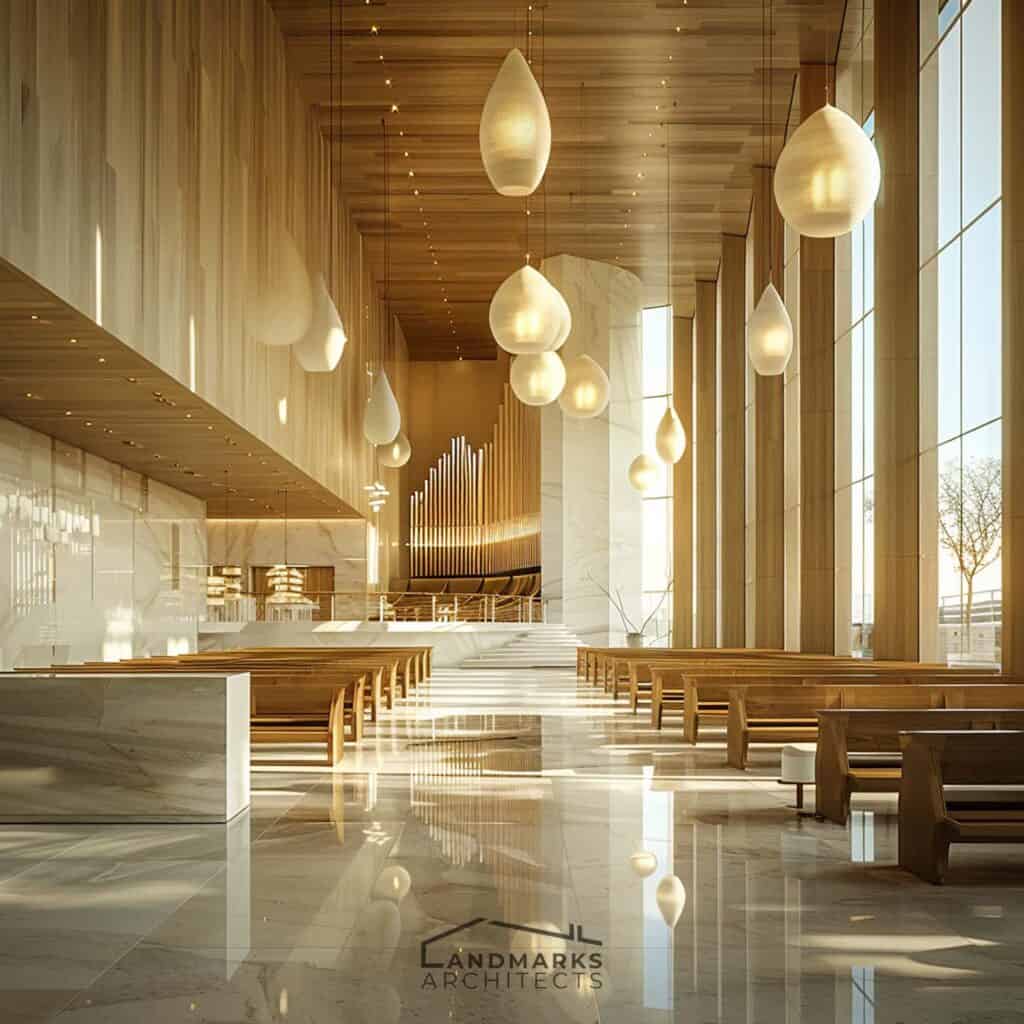

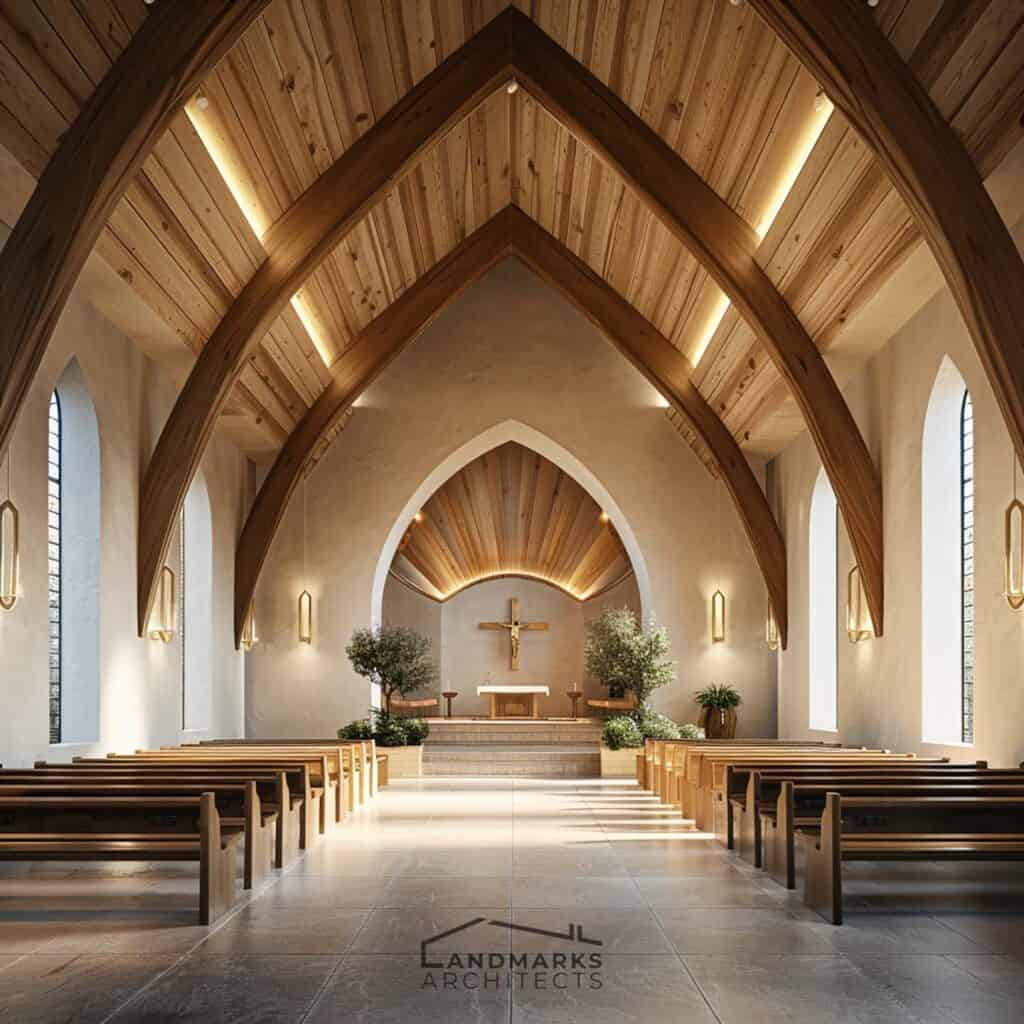
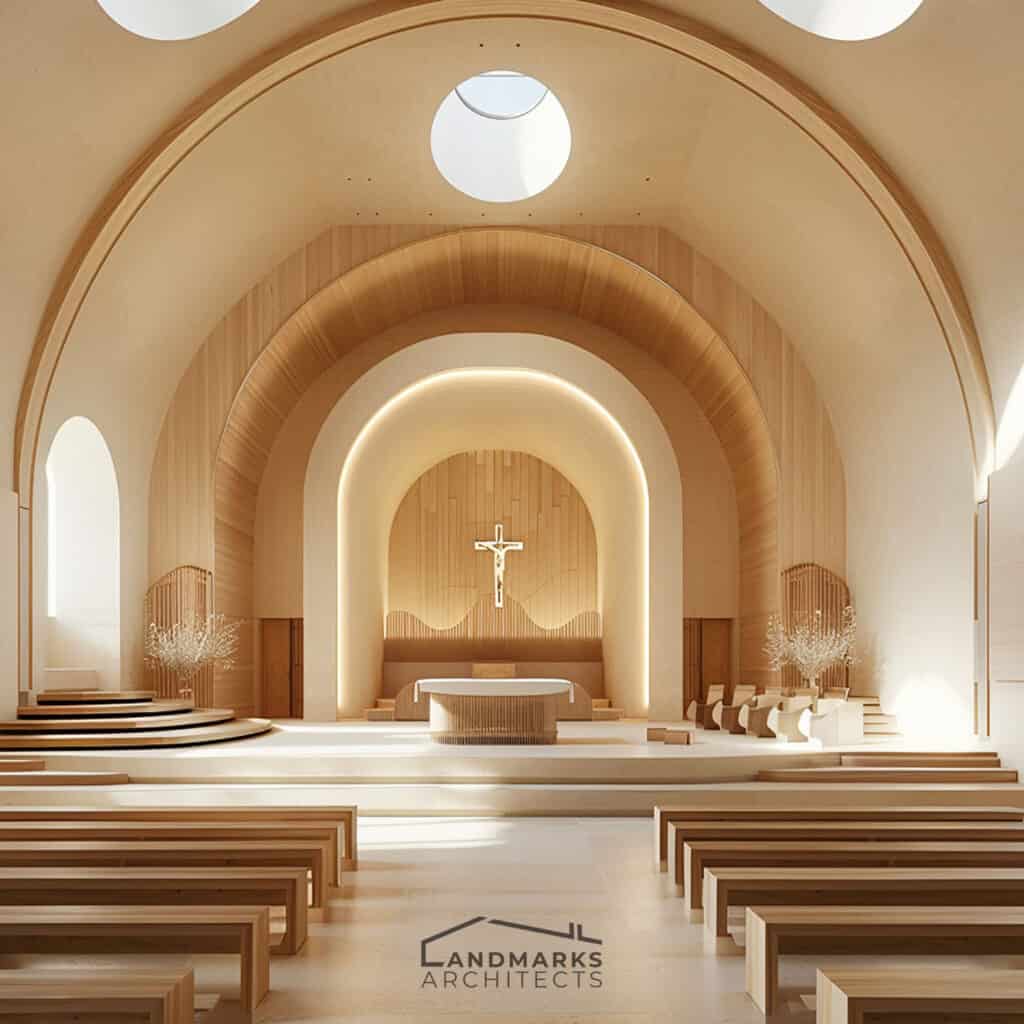
As the world increasingly embraces eco-conscious living, modern churches align themselves with sustainable practices. Interior designers take a lead role in this endeavor by incorporating environmentally friendly materials into their designs. From reclaimed wood accents to energy-efficient lighting solutions, these choices not only reflect a commitment to environmental stewardship but also infuse the church with a contemporary aesthetic inspired by mid-century modern design principles.
See also: Wooden Interior Design
6. Bridging Tradition with Contemporary Expression
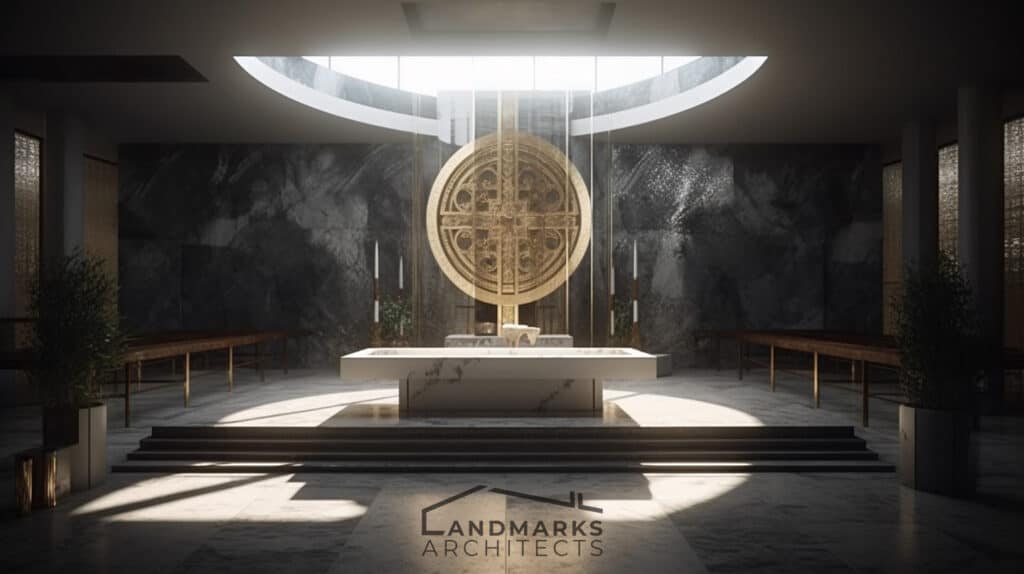
The integration of art and symbolism serves as a poignant bridge between tradition and modernity within church interiors. Collaborating with artists, interior designers carefully weave religious symbols into contemporary design contexts. The result is a visual narrative that honors tradition while embracing the present, elevating the spiritual experience within the church walls.
7. Challenges and Solutions
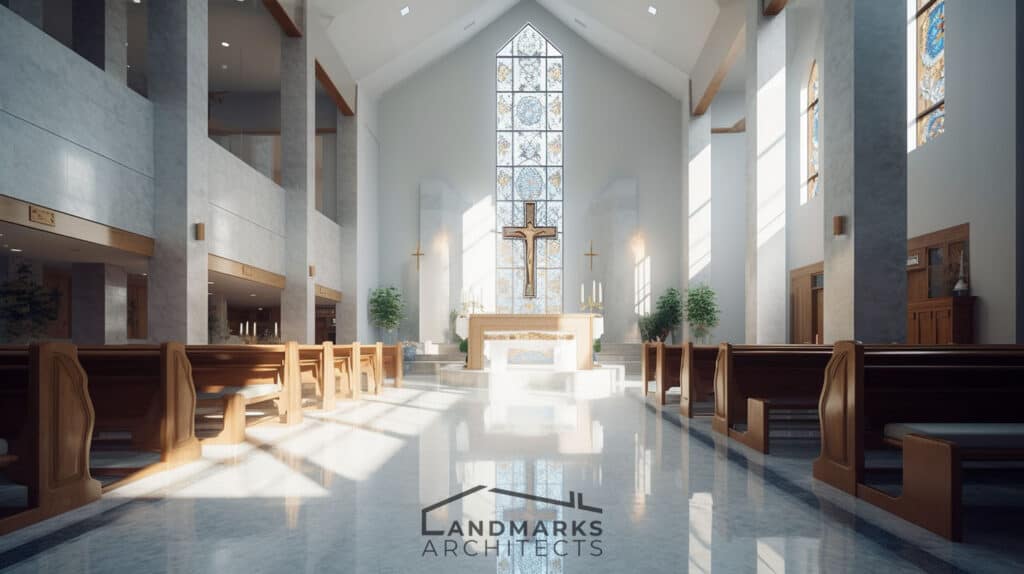
While the transformative potential of modern church interior design is undeniable, challenges may arise. Limited budgets, preservation of historical elements, and congregational resistance to change are common hurdles. However, interior designers are adept at crafting innovative solutions. Phased renovations, preservation of historical elements alongside modern introductions, and engaging congregants in the design process are strategies that overcome resistance and build enthusiasm for the transformative process.
Modern Church Interior Design: A Recap
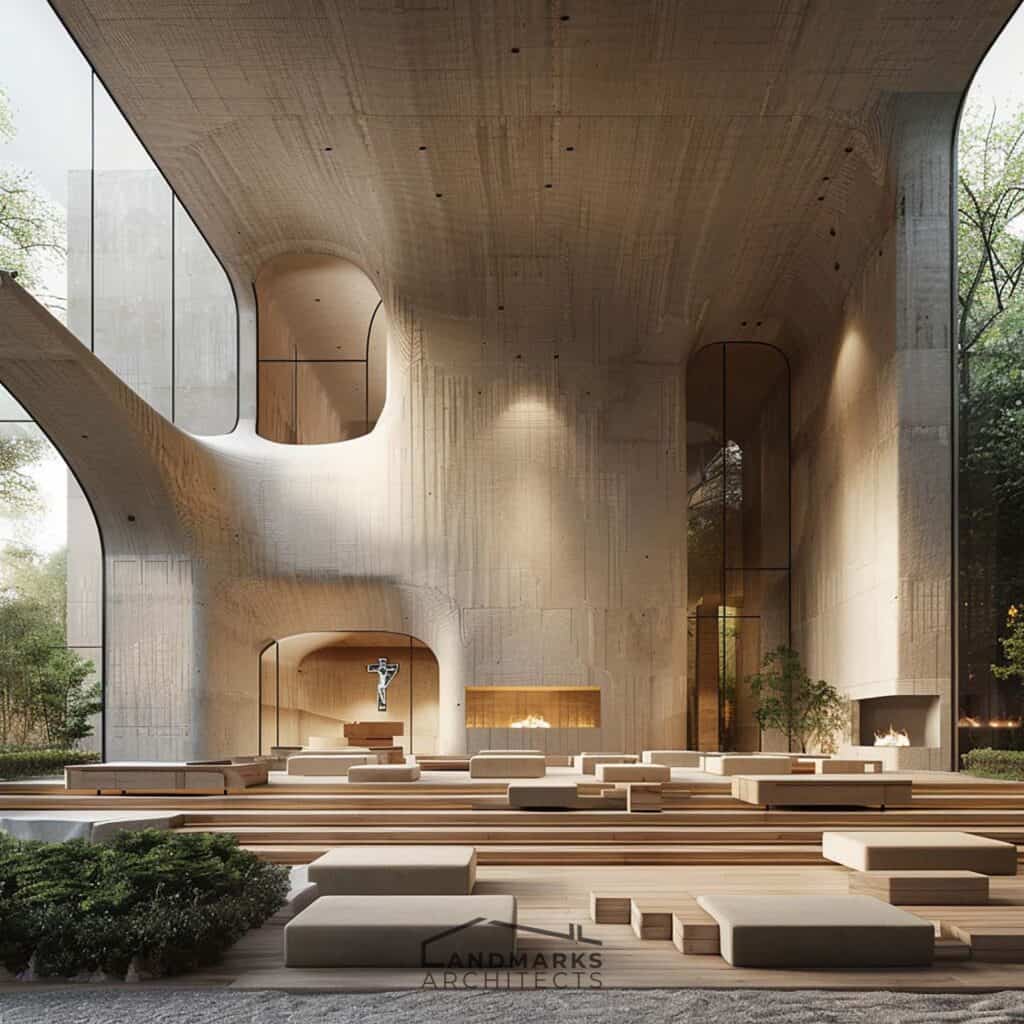
In the symphony of functionality, technology integration, flexibility, inclusivity, sustainability, and symbolism, modern church interior design emerges as a dynamic force that shapes sacred spaces into transformative sanctuaries. Interior designers, as architects of spiritual narratives, play a crucial role in this exploration.
As we reflect on the convergence of tradition and modernity within these spaces, we recognize that a well-designed church interior has the power to enhance the overall spiritual experience, creating not just places of worship but living embodiments of a community’s faith exploration.
Through the strategic placement of church chairs, the seamless integration of technology, and the thoughtful infusion of sustainable materials, these sanctuaries become more than spaces; they become narratives, inviting congregants to commence a spiritual exploration within the walls of modernity.
